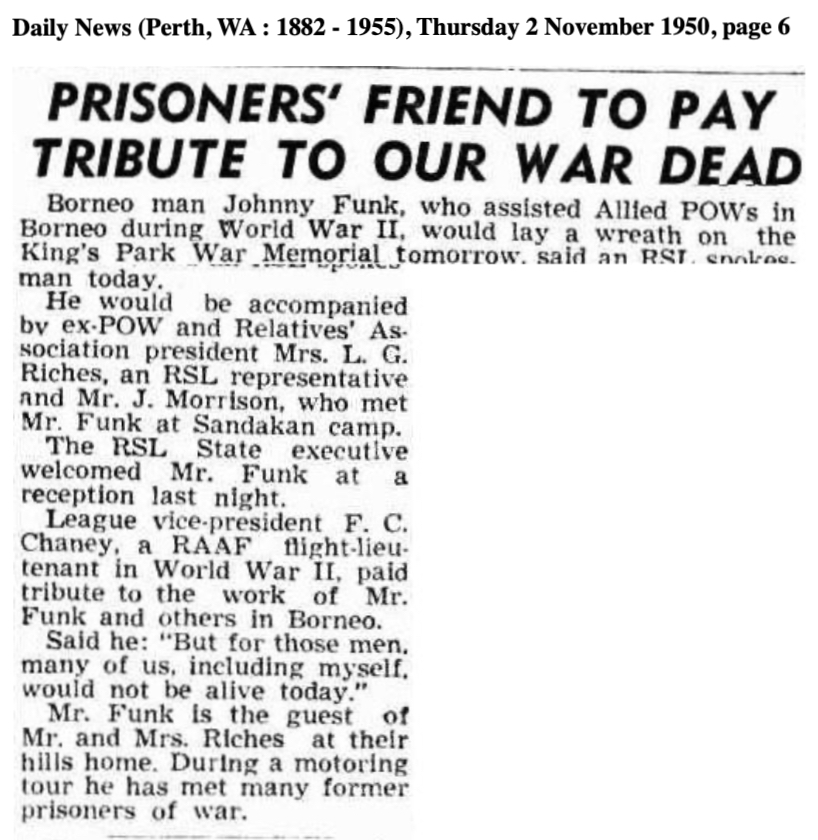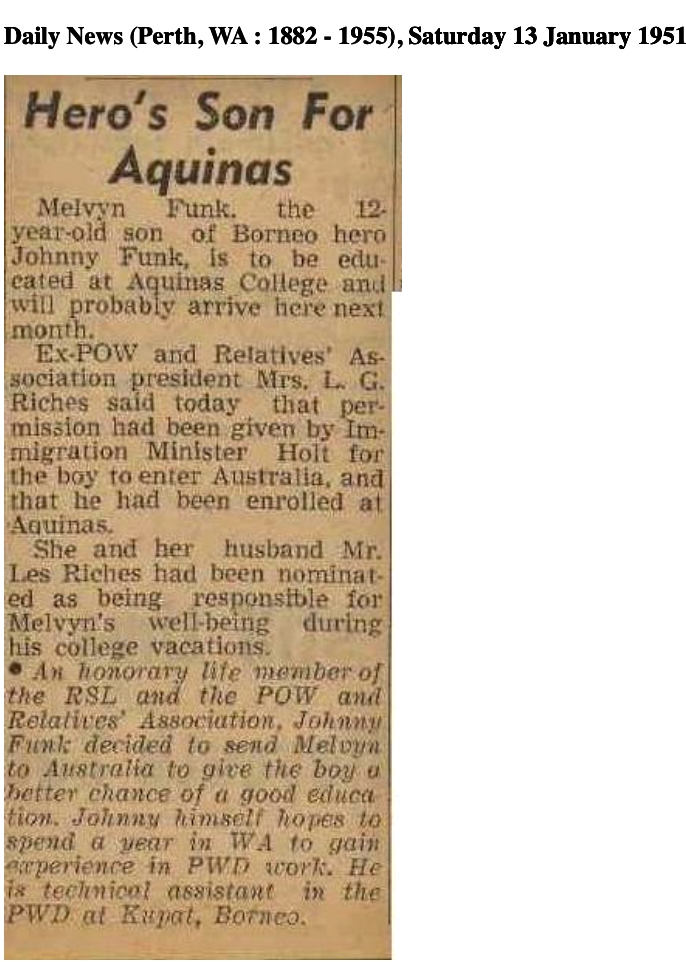WX12378 John Cecil SWIFT and WX11472 Ronald FredericK MANTHORPE were both motor mechanics with AAOC. When they finished working on Burma-Thai Railway with ‘D’ Force V Battalion they were sent to IJA Truck Depot just outside of Bangkok to repair/maintain Japanese trucks.
Wally Bow also got a job although he was not a trained mechanic, with Swift and Manthorpe. This placement was far better than being sent on work parties throughout Thailand.
Below: Ron Manthorpe and Swift.
 .
. 
WX7253 Walter ‘Wally’ Verdun Bow had worked on the Burma-Thai Railway with D Force V Battalion which had a torrid time with many deaths. Please read further
Following Wally’s enlistment Aug 1940 he joined ‘D’ Company 15 Platoon as a driver under CO Lt Meiklejohn. Meiklejohn was KIA as was 15 Platoon 2 I.C. Sgt Solly. The Platoon suffered many deaths and wounded during the first days of the Japanese invasion of Singapore. Wally was WIA at Buona Vista on the last day of fighting before the surrender. He was admitted to 2/13th Australian General Hospital on 16 Feb 1942 with shrapnel wounds to his left and right buttocks and discharged to uinit on 22 Feb 1942.

WX12378 John Cecil SWIFT and WX11472 Ronald FredericK MANTHORPE were both motor mechanics with AAOC. When they finished working on Burma-Thai Railway with ‘D’ Force V Battalion they were sent to IJA Truck Depot just out of Bangkok to repair Japanese trucks.
Before WWII, Japanese commercial trucks were very poor and IJA could not rely on them for military service. So, IJA supported private motorcar companies and made them develop a military 6-wheeled truck. It was the Type 94 6-Wheeled Truck. Type 94 Truck was reliable and had a good performance. Type 94 was produced in the largest numbers among the Japanese trucks and used widely until the WWII ended.
Japan began motorising its army and create motorised infantry regiments to go with its newly formed armoured regiments. Gradually, and especially until the end of the 1930s for operations in China, the Army purchased a variety of trucks to carry troops and supplies. This increased in WW2 with a variety of lorries and trucks built by mostly by Toyota, Nissan and Isuzu. These were the Type 94 6-Wheeled Truck, Type 95 Mini-truck, Type 97 4-Wheeled Truck, Type 1 6-Wheeled Truck and Type 2 Heavy Truck for the latter, and Toyota KB/KC Truck, Nissan 80 and 180 Trucks, plus the Amphibious Truck Toyota “Su-Ki”
Development of the Type 94
The Type 94 was initially developed in 1933 as part of the Imperial Japanese Army’s program to sponsor independent motor companies, in order to provide the army with a reliable truck platform. This was to counter the already tested existing civilian lorries which had poor performance in the field. Isuzu showed their design and a prototype was tested and eventually accepted in 1934. This sturdy 6×6 configuration gave all satisfaction in terms of range, reliability, and most important, off-road capabilities.
The Type 94 was a 6×6 army truck design, fitted with an Otsu diesel engine that was capable of propelling it at speeds of up to 60 km/h while preserving range. The vehicle itself neither unarmed and unarmored, but carried two spare tires on the side for maintenance. The crew comprised single driver and the practical payload was 1,300 kgs of cargo, or and infantry platoon. Total weight was around 4,800 kilograms, total length 5.3 metres. Its army requirements design made it, unlike its civilian-based predecessors, highly reliable in the field and very capable of traveling cross country, helped also by a high clearance, to traverse the rough jungle terrain where it mostly served. Variants built during the war included an optional gasoline engine, a soft top and hard top conversions for the driver cabin roof.




Below. I.J.A.-ISUZU-6-wheeled-Truck

Below: Photo Taken Manchuria.

Unfortunately we can find no information on the Japanese Transport Brigade location near Bangkok, nor details of POW accommodation.
Swift, Manthorpe and Bow survived and recovered from Thailand to return to Australia at the end of the war.
23 YEAR OLD RUPE MILLHOUSE WAS ONE OF 15 AUSTRALIAN PRISONERS HELD IN A SMALL ROOM AT JAPANESE HQ, at BUKIT TIMAH ON 19 FEB 1942.
During the fighting in Singapore on 11th Feb 1942, SRB had crossed through scraggy bush land and entered a basin shaped piece of land without vegetation, they could see native huts at the end of the clearing. They had hours earlier, in great haste evacuated their last position which was overrun by Japanese soldiers.
Suddenly all hell broke out – SRB, plus one Indian and one British Company walked straight into a Japanese ambush.
Officers managed to yell sufficient orders to a large number of soldiers to form a bayonet charge against the Japanese machine guns located ahead in the huts and to the sides. Soldiers were falling either KIA and wounded. The Indians panicked. Those at the rear realised their best chance of surviving was to run from the shooting.
Those left behind Japanese line sought safety in the scrub. Most were hunted down and killed.
Les McCann with a wounded leg sought safety in a native hut where he found 2 wounded British officers and an Indian soldier – together they tumbled into a dugout shelter beneath the hut and waited in silence.
The four men spent at least a night if not two before McCann took a gamble and poked his head out of the below ground shelter – they had had nothing to eat or drink. Les was in luck, he immediately spied a demijohn on the other side of the hut and quickly crawled over and grabbed the container, some coconuts and a few pieces of food before disappearing out of sight. They were able to wash their wounds.
The following morning McCann decided to venture outside and further away into the nearby native village. As he carefully crept between huts he heard a voice call out. It was Rupe Millhouse from his Platoon. Rupe was seriously wounded with four GSW in his knee and unable to walk at all. McCann immediately dressed his wound, found a rifle to use as support the two men quickly returned to the underground shelter and interim safety.
The British and Indian soldiers decided they would leave the next morning, take a chance and head for the coast. Millhouse was in great pain and in no condition to walk. He and McCann decided to stay for what would be another two nights during which time McCann cleaned and dressed Rupe’s wounds, fed and watered him.
With no clue of what was ahead Millhouse and McCann left the shelter and began walking towards Singapore. It was 14 Feb 1942. They saw a few elderly native women with young children, even a Japanese convoy. It rained again and they took rest in the first kampong hut they came across. In the morning two monks came by and advised them the war was over and the Japanese wanted all soldiers to quickly return to Singapore and showed them the direction of the coast road. They came across an Australian Naval man who advised them to abandon their weapons – he was travelling north intending to escape.
16th February McCann and Millhouse moved out again along West Coast Road where they met 3 other Australians near Pasir Panang Village. The 5 men were stopped by Japanese sentries standing outside an arched building and ushered inside. They were then locked in a room fitted with barred windows. At about 1800 hours that evening they were taken outside and put on a truck. At the gate they met another Japanese who was escorting more Australians including R.S. Fred Airey and Private Harold Ockerby; the remainder were all members of 2/28th Battalion. The group no numbered 15. R.S.M. Airey had been conscripted from. Singaporeto drive trucks for the Japanese for the purpose of collecting Japanese bodies to be taken to the crematorium.
Below: WX7736 Private HAROLD BERTRAM OCKERBY died aged 42 years. A WW1 veteran Ockerby had been Driver to 2/4th Battalion’s CO Lt. Col Anketell.
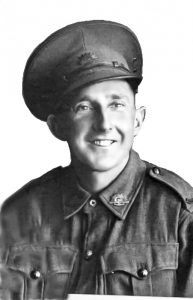
It was five days after the Allies had surrendered to Japan. The previous day the prisoners had been questioned one by one and returned to their ‘cell’.
On 19 February, the 15 Australian prisoners were called out of their room/cell one by one, each had their hands tied behind their backs with hessian, and then ordered to march.
First past the jeering Japanese soldiers who had shown nothing but contempt for the Australian soldiers. They were especially bitter towards the machine gunners who had fought them to the end.
They were ordered to march towards remote scrubland until they reached a creekbed. Here they were ordered to line up, turn their backs towards the Japanese (7 soldiers).
It was probably at this point the Australians realised the seriousness of their situation. The had initially believed they were to be questioned again.
Who knows what went through their minds.We can only be thankful it was over quickly – well for most.
Following the first volley Rupert Millhouse was left standing alone, the only prisoner standing. The Japanese were playing their usual spiteful games – they had singled Millhouse out during the march and now they wanted him to suffer further. He yelled what he thought of them right up to the moment he was shot.
He had received four GSW to his right knee during the ambush at SW Bukit Timah on 11 Feb. He was barely able to stand let alone walk. The Japanese can be likened to wild animals when they turn on the weaker of their species. Millhouse’s captors took great delight in tormenting him, viciously poking Millhouse and McCann him with their bayonets till they drew blood and never letting up. Millhouse was the slower marching of the two men and hence attached greater attention.
Below: Millhouse was born SA and came to WA several years prior to enlisting. He was born 1919 into a large family of 6 boys and 5 girls at Port Lincoln.

Les McCann had found the badly wounded Millhouse following the ambush. They were two of several 2/4th men left behind Japanese lines, most of whom were wounded
Below: WX17837 PRIVATE LESLIE ‘LES’ WILLIAM MCCANN
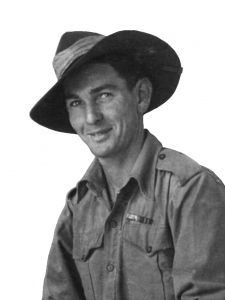
Two men from 2/4th survived the execution that day although neither had any idea the other had done so, Fred Airey and Les McCann. Airey made his way to Sumatra and then to Java. At Java he was was taken POW of Japanese about 8 March 1942.
The twice injured McCann slowly made his way back to Changi where he remained until the end of war.
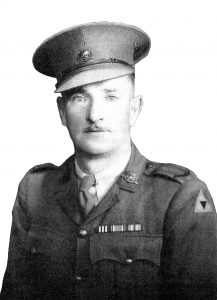
Above: Warrant Officer Class 1, WX13977 GEORGE FREDERICK ‘FRED’ AIREY
The following has been copied from Airey’s statement for the United Nations War Crimes Commission
“I could not tell the men of the Japanese intentions. I next went out refusing to be tied, I was handled roughly being struck both before and after my hands were tied. I asked as best I could for an officer. The wounded men, McCann and Millhouse were not tied to the best of my belief. We were then told to march, proceeding under the eyes of about 1000 Japanese soldiers, up Reformatory Road. The men were quite unconcerned; in fact they thought it funny.
The Japanese in charge of the party appeared to me to be an officer or a warrant officer he was about 5 foot feet 6 inches tall, well built, about 24 years old. He was fair and good-looking for a Japanese. Turning off the road into light growth we proceed south. Looking around I discovered that McCann and Millhouse were distressed. Breaking ranks I went back to McCann, who was being forced along with a bayonet in his rear. I sent McCann forward, the Japanese soldiers who had forced him along staying and threatening me. Millhouse was practically exhausted when he reached me having been forced to walk fast with a bullet wound to his knee, the Japanese bayonets drawing blood every time he slackened his pace. I went with Millhouse and we joined the party, taking up my former position.
Proceeding a further distance along the bank of a small stream we were told to form a single file. The Japanese in charge halted and pointed across the stream, calling an order the men immediately turned right to see how to cross the stream, when the first volley was fired. I saw two men falling forward into the stream, others crumpling up where they stood. A bullet whiz past my head (it had been impossible to form any plan to escape and up to this very second I had no idea that there was a chance in a million), I somersaulted into the bed of the stream and lay still. Millhouse couldn’t do anything and the Japanese in their usual cruel way left him to the last. In the meantime he told the Japanese in no uncertain terms just what he thought. I considered this extremely gallant.
After dropping everyone the Japanese proceed to make certain by giving us all an extra round. I heard the strike of the bullet into the body next to me and awaited mine. When it came the bullet grazed my forehead, taking skin only and covering my face with gravel, water and blood. I remained in this position until I heard the voices of the Japanese fading away. After sometime had elapsed I opened my eyes and cautiously looked around to make certain that the Japanese had gone. Sitting up I then cut my hands free with a razor blade which I had been able to extract from my haversack and then went around to possibly eight of the bodies that were screened from Japanese sight to ascertain if they were dead or had miraculously escaped as I had. They were all dead; the bodies that were lying above on the bank I called to them and getting no reply, I assumed that they were also dead also. I then attempted my escape.
Returning to Singapore from Java in 1943 I discovered that McCann was alive.”
THE TRAGIC DEATH OF RON ELLIS 1942, SINGAPORE – BRAVE YOUNG BOY FROM WAGIN
Singapore 11 Feb 1942 at 2/13th Australian General Hospital then located at St Patricks School a young Western Australian soldier who had fought so hard to survive, took his last breaths. In order to save his life medical staff amputated his badly wounded arm 2 inches below his shoulder. The patient also had a shrapnel wound to his chest and had been in a badly shocked state when brought in.
WAGIN boy Ron ELLIS was 21 years old.

WX13079 Ron Ellis enlisted AIF 17 May 1941. At Northam Army Camp in late Dec 1941. Ron Ellis was one of 246 soldiers selected to reinforce 2/4th Machine Gun Battalion. Several men had only just enlisted and a larger number had only the barest training. They were given leave and ordered back to Camp after New year. On the morning of 15 February 1942 the men marched through Northam and boarded a train to Fremantle. The carriages were filled with excitement and bravado. They had no knowledge of their destination nor what lay ahead. Their train slowed down when passing through small towns allowing locals to farewell them.
As the train neared Fremantle the boys could see a massive ship. The ‘Aquitania’ with about 4,000 troops was anchored at Gage Roads off Fremantle. The reinforcements were taken out to ‘Aquitania’. Climbing aboard they encountered hundreds of soldiers attempting to leave the ship without permission and desperate to see their families. Some were exiting port holes, others over the side.There was madness.
The following day ‘Aquitania’ prepared to sail for Singapore just after midday on 16th Feb 1942. Left behind were about 90 well trained machine gunners.
On the day before landing at Singapore, half of 146 soldiers were designated to form ‘E’ Company, SRB and the remainder would reinforce 2/4th’s platoons, in particular to fill the places of the men left behind in Fremantle unable to free themselves from Fremantle goal. A large number were locked up in Fremantle gaol by over- zealous MPs and local Police who failed to enquire when their transport ship was departing.
Ellis was one of three reinforcements to join the newly formed 16 Platoon. At Singapore 24 troops transferred from D Coy’s four Platoons and with three Reinforcements formed 16 Platoon under C.O Sgt Arbery, Platoon Sergeant Colevas & L/Cpl Stribley.
22nd Brigade (3 Battalions) had the eight mile NW coast Sector and was supported by 2/4th’s ‘D’ Company 13, 14, 15, and 16 Platoons.
‘D’ Company 14 & 16 Platoons were supporting 2nd Brigade’s 2/19th Battalion whose CO Lt/ Col Oakes had replaced Lt-Col Anderson VC who was ill. Their location was from the Murai to Berih (Sungei) River and Choa Chu Kang Road. The mouth and estuaries provided an excellent opportunity for deep penetration by Japanese landing craft giving access to Tengah Airfield and ability to attack the rear of 22nd Brigade. The area is best described as a tidal basin a kilometre wide from north to south and twice that in length.
16 Platoon was located on the exposed north headland of Tanjong Skopec with two guns sited on the water’s edge and a third 350 metres east covering a huge area without any supporting infantry.
During the early fighting Stribley was KIA. CO Arbery & Colevas WIA & evacuated.
Ordered to fall back to Bn HQ 16 Ptn found ‘D’ Coy HQ deserted and ran into strong Japanese concentrations. Under attack they were forced to scatter into small groups. Destroying their guns they tried to make their way back to Australian lines.
By Surrender on 15 Feb 16 Platoon had 8 men standing. Nine were KIA, two escaped to Sumatra, at least 6 wounded and at least 2-4 missing in action.
16 Platoon was made up of 27 men
By Surrender on 15 Feb 1942
9 men KIA
3 Men WIA evacuated 8/9th Feb
3 men shell-shocked
(Harrison did runner & boarded ship to Fremantle, Wilson MIA 8/2 returned to Unit 15 Feb, Richard Annear escaped Sumatra, Wood escaped to Java )
8 Men Standing
Late Pte. RON ELLIS, No. 16 Platoon
Heroism at Singapore
An interesting letter has been received by Mrs. G. Ellis, of Wagin containing news of her late son, Pte. Ron Ellis, who was recently reported as having died of wounds at Singapore.
The Letter comes from a very reliable source, and having seen the original for ourselves, we can vouch for its authenticity. However, as permission has not been given by the writer to publish her name, we will not disclose the source of the information. The letter is sufficient to show that Ronny Ellis, during his tragically short period of actual service, proved himself to be a real Australian soldier, with everything that it takes to be a hero!
Efforts are now being made by local Authorities to see that the action of the late Pte. Ellis, in rescuing an officer under heavy enemy fire is reported to and recognised by the Military Authorities.
The letter received by Mrs. Ellis reads as follows: –
‘Dear Mrs. Ellis,
You will no doubt be very surprised to receive this letter from a stranger, but as my brother fell in the same battle as your son Ronald, and I have been able to gain some details – particularly in relation to your boy – I am taking the liberty of writing this to you in the confidence that it will bring you pride and some consolation. I feel sure that you will want to know all that can be found out, as much as I have wished to learn about my brother’s death, but without success.
The news I have for you was given me by a Corporal of the 2/4th Machine Gun Battalion, who escaped from Singapore near the end of the battle, and has been back in Perth some three weeks. I, of course was anxious to learn if he knew anything of my brother, but, unfortunately, as they had been in different Companies, they were unknown to one another. However your son Ronald was known to the Corporal, and I am glad to be able to tell you that your son’s courage and devotion to duty were all that anyone could hope.
In the Cpl.’s own words, “Ronnie saved my life”.
As related to me, it appears that about a dozen men were endeavouring to carry out a retirement, when they found that they were caught on three sides by Japanese troops and were consequently forced to swim a river to escape. Discarding all equipment, they entered the water and endeavoured to reach the opposite bank. All succeeded in doing so except the Corporal, who is a bad swimmer and he got into great difficulties in midstream. Thereupon, your son returned to him and assisted him to the far bank, all the time under dangerous fire from the enemy. It was a great example of absolute unselfishness and fearlessness and, I am sure will be a source of great pride to you.
The above occurred on Monday, February 9th and the Corporal was with your son until Wednesday the 11th, when they lost touch with one another. I understand that it was on the next day that your son was reported to have died. Please accept my sincere sympathy in your sad loss, and I know that you will understand that I can enter fully into your feeling of sorrow and loss, as my brother fell on the next day and I did truly love my brother ________
Yours sincerely, _______________
-
-
With no name it has been challenging to find the author of this letter.
-
We BELIEVE THE CORPORAL WHO WAS SAVED BY RONNIE ELLIS to be:
-
WX27293 Cpl Arthur John Charles ROWLAND,
Platoon Sergeant to Commanding Officer Lt Harry Green, of SRB No. 1 Platoon.
-
Both these men were reinforcements for 2/4th MB from Northam Army Camp. Whilst Ellis was sent to 16 Platoon, Rowland remained with ‘E’ Coy – joined No. 1 Platoon.
-
Rowland enlisted 6 Oct 1941. He was selected as one of 146 reinforcements for 2/4th MGB, and sailed on ‘Aquitania’ joining ‘E’ Coy SRB No. 1 Platoon under CO Lt Harry Green.
-
On 11 Feb 1942 Rowland received a GSW to right thigh and was listed as missing in action. He escaped to Sumatra as was believed at the time. Rowland’s good fortune was that when he arrived in Sumatra he was able to board a ship bound for Ceylon, who knows, maybe the last ship out! (When other 2/4th arrived Sumatra there were no further ships and they were taken POWs by Japanese).
-
Rowland was admitted to 2/12th Australian General Hospital at Colombo, Ceylon on 9 March 1942. Four days later on 13 March 1942 he embarked on HMT ‘Stirling Castle’ for Australia, disembarking Melbourne on 6 April 1942. Rowland disembarked Fremantle13 April 1942 on British ship ‘Egra’.
-
Rowland was Taken on Strength with 2/3rd Machine Gun Battalion and joined the 1st Australian Machine Gun Company on 6 Aug 1944.
-
On his return to Australia, Arthur faced a Court of Enquiry 15 June 1942 held to enquire the circumstances of the escape by Rowland. (there had been instances where soldiers escaped Singapore having left their posts without permission). The Court found there was no evidence to prove that his leaving of the Island was not justified.

Please read about Rowland
-
-
Rowland is the only 2/4th Corporal to have been involved in the fighting to escape Singapore and reach Australia.
Below: Aquitania.

There was another 2/4th who also escaped using same route and date as Rowland.
WX8448 Private George TAYLOR 12 Platoon. He was listed as Missing in Action, believed to have been killed at Sungei Jurong – 2/4th ‘C’ Coy was supporting 44th Indian Brigade, located at southern most defensive line. Scottish born Taylor had been working as a clerk at Bunbury Courthouse when he enlisted 18 Oct 1940.
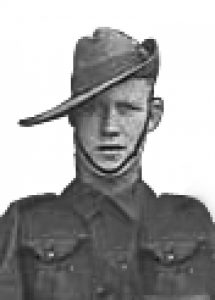
It was later discovered Taylor escaped to Sumatra, had been picked up by HMAS Hobart at Padang on the west cost of Sumatra and taken to Ceylon. On arrival 9 March 1942 he was admitted the to 2/12th AGH. Four days later on 13 March 1942 Taylor boarded the ‘Stirling Castle’ and disembarked Melbourne on 6th April 1942. From Melbourne to Fremantle he sailed on ‘Egra’ disembarking on 13 April.
The following is an extract from My War Diary, HMAS Hobart, 27th of February 1942 – 20 March 1942 written by Thomas P Fisher and explains the lucky extraction of George from Sumatra
“The reason that we were not with Perth and Houston was and I quote from my diary;
Tanjong Priok Harbour, Java onboard HMAS Hobart
‘On 25 February 1942 we secured alongside the oil tanker War Sirdar to fuel HMAS Yarra was just casting off from the other side of the tanker.
At 10:25 we were attacked by 11 Jap bombers. Bombs dropped all around us making the Hobart jump around and bounce.
We were attacked twice and 44 bombs landed all around us. One bomb went through the stern of the tanker and exploded underneath it.
The Hobart was heeled over by the force of the bombs bursting down our starboard side. At 1100 we cast off in a hurry and put it to sea at high-speed. We could not complete fuelling due to the air raids and damage to the tanker.
As we did not have enough fuel, the Perth left without us and went down to the battle of the Java Sea. Our time in this war zone was running out and I was not aware of it then. At midnight on 27 February we put to sea from Tanjong Priok, Java. A huge fleet of Japanese ships were reported due to land at Java in the morning. In company with the HMS Dragon and HMS Danae, we put to sea to try and meet the enemy and destroy as many as possible. We made a sweep towards the north but did not make contact.
Orders were received from Commodore Collins that if we did not meet the enemy we were to leave the area by way of Sunda Straits which we did at dawn on 28 March and proceeded to Padang on the west coast of Sumatra.
Once again we were lucky because the Perth and USS Huston, an American cruiser, attempted to go through Sunda Straits 18 hours later and were both sunk. Their crews that survived were taken prisoners by the Japanese. They had run into the enemy fleet that we had been sent to try and intercept. The Exeter was sunk the day before. Of our cruiser force of seven ships only the Trump and ourselves survived. The Dragon and Danae were not attached. The Java and the De Ruyter were sunk in the Battle of the Java Sea.
At 7:30 pm on 1 March we arrived at Padang, and our ship evacuated 550 men, women and children. The men were mostly soldiers who had escaped from Singapore. At 9 pm, we put to sea with one destroyer doing 28 knots. On 3 March we took 106 evacuees from the ‘Dragon.’ The transfer was carried out at sea. Among them were Indian troops. Also on board was a soldier from the 2nd 4th Machine Gun Battalion, George Taylor from Fremantle.
Next day we fuelled the destroyers at sea and the following day, the 5th, arrived at Colombo where we disembarked the troops and evacuees.”
‘Hobart was fuelling at Tandjong Priok on 25 February 1942 when 27 bombers attacked her and the tanker from which she was fuelling. It was estimated that 60 bombs fell near and around her. She suffered some damage from bomb splinters and some casualties and it was her inability to complete fuelling on this occasion that prevented her from taking part in the disastrous Battle of the Java Sea on 27 February 1942.’
Please read further about HMAS Hobart
FYI
Each Machine Gun Platoon consisted of two sections each with two Vickers machine guns giving the Battalion a total of 48 Vickers machine Guns.
No. 1 and 2 on the gun were to be issued with revolvers, but in the case of 2/4th, this never happened.
Supposedly each Platoon was to be equipped with a Boyes Anti-Tank rifle – but these were never issued to 2/4th. For each platoon six 15 cwt trucks were provided, giving each Company a total of 21 vehicles.
The battalion was organised by attaching certain personnel from Battalion HQ and HQ Companies to the Machine Gun Companies – enabling each Machine Gun Coy to be self-contained administratively.
Battalion transport included 122 vehicles as well as motorcycles – the reason for the inclusion of a high number of driver trade groupings in the Battalion. The handling and maintenance of all these vehicles was paramount to the efficiency of the Battalion. Therefore the Transport Sergeant, Corporals and Light Aid Detachment (L.A.D.) who serviced these vehicles had a big responsibility to ensure serviceability of the Battalion’s transport.
‘X’ BATTALION, 8TH DIVISION SINGAPORE
An extra Battalion was formed in Singapore under the leadership of VX13608 Lt-Col Boyes known as ‘X’ Battalion placed under command of 22nd Brigade.
‘In the early afternoon of 10 February, on learning of the collapse of the Jurong Line, Wavell ordered Percival to launch a counterattack to retake it. The order was forwarded to Bennett, who allocated X Battalion to the task. Percival made plans of his own for the counterattack, detailing a three-phase operation that involved the majority of the Australian 22nd Brigade, and subsequently passed this to Bennett, who began implementing the plan but forgot to call back the X Battalion. The battalion, comprising poorly trained and equipped replacements, advanced to an assembly area near Bukit Timah. In the early hours of 11 February, the Japanese, who had concentrated significant forces around Tengah airfield and on the Jurong road, began further offensive operations’
‘the Japanese 5th Division aimed its advance toward Bukit Panjang, while the 18th Division struck toward Bukit Timah. The Japanese fell on the ‘X’ Battalion, which had camped in its assembly area before launching its counterattack, and two-thirds of the battalion were killed or wounded.’
Lt. Col Boyes’ second-in command was Major Bradley, of the 2/19th Battalion, and his company commanders were Majors O’Brien (of the 2/18th) and Keegan (2/19th) and Captain Richardson (2/20th). There had been no time to officially prepare and record the men’s details. They remain unknown.
The Battalion was equipped with rifles, fifteen sub-machine-guns, eight light machine-guns, five 2-inch mortars, and two 3-inch mortars. Some of the men were armed with only hand grenades, and others carried only ammunition.
Machine-gun carrier vehicles were to join the battalion the next day.
‘X’ Battalion troops were somewhat concerned to receive this unexpected order to an unknown destination in darkness. They had passed by British troops earlier who had warned Japanese were about. They had been fired upon by Japanese snipers and could hear heavy fighting on the right. Their location was Jurong I Trigonometry Station on Hill 138.
Lt. Col Boyes had quickly spoken with Major Saggers of SRB – they were known to each before the war. He told Saggers he had to get 450 men settled into their positions – it was already 11pm.
The 3 Companies although uneasy, settled into their positions and the men asleep by 1.00 am.
The 6th/15th Indian Brigade were on their right and 200 strong ‘Merrett’ Battalion were supposed to be on their left – but had taken a track from Reformatory road and forced their way through difficult terrain of bog and tangled growth, hanging on to each other’s bayonet scabbards to maintain contact in the darkness, had formed a small defensive perimeter in Sleepy Valley to await daylight before pushing on.
At 3 am (11th February) the 18th Japanese Division, advancing along Jurong road, launched a sudden attack on the battalion front and flanks catching the Australians completely off guard. The Japanese used hand grenades to ignite a petrol dump near Battalion HQ and Lt-Col Boyes and Bradley who were instantly killed. There had been no time for their sentries to give adequate warning.
Troops were bayoneted in their sleep and others, half awake tried to defend themselves, but were overwhelmed. The Japanese attacked with small arms, grenades and mortar bombs followed by hand to hand combat, quickly overwhelming the Battalion. Groups of men dispersed in various directions, some attacked on their way. Keegan was severely wounded during such an encounter and it became impossible to remove him.
A party led by Lieutenant Richardson who was located on the Left flank was challenged in English, and he went forward with his batman to investigate. He shouted to his men “I’m O.K. but you clear out”. With this warning they succeeded in getting away. Neither Richardson nor his batman was seen again .
O’Brien’s company positioned Right forward, missed the main assault, and the men got away relatively intact.
The losses were so great ‘X’ Battalion would no longer exist.
Merrett soon realised his men was threatened with isolation and ordered his men to move back to Reformatory road at dawn.
The move commenced at 5 .45 am but came under immediate fire. The men divided into groups fighting different actions. Only a small number got back to Australian lines, and were re-drafted to other units.
2/26th Battalion & Lt Col Arthur Harold BOYES
The 2/26th Battalion was raised Nov 1940 at Grovely, Brisbane, Queensland. LT. Col Arthur H. Boyes, a Duntroon graduate, was appointed Commanding Officer of 2/26th. 2/26th recruits came from Queensland and northern New South Wales. Their weekly cross-country training runs earned the unit its nickname ‘the gallopers’
At Singapore the 2/26th Battalion defended the Causeway sector.

‘Studio portrait of VX13608 Lieutenant Colonel (Lt Col) Arthur Harold ‘Sapper’ Boyes, 2/26 Battalion. Having trained at the Royal Military College, Duntroon, and after holding various Military appointments during the interwar period, Lt Col Boyes was appointed Commanding Officer of 2/26 Battalion in October 1940. Lt Col Boyes was killed in action when Japanese forces advanced down the Malay Peninsula, on 12 February 1942, aged 45 years.’
Did you know about 7,000 Australian soldiers became POWs of Germany & Italy in WW2
Mostly captured Greece and Crete
and Incarcerated throughout Italy
The majority were captured during the ill-fated Greece and Crete campaigns of April to June 1941. The men were airmen and soldiers of 6th, 7th and 9th Divisions. Most remained captive for more than three years enduring cold, hunger, soul-destroying and never-ending boredom and sometimes physical brutality in Italy and later Germany.
Whilst researching 2/4th’s WX8631 Samuel James BLEWETT I discovered his older brother Frank William Blewett WX9047 2/32nd Battalion 9th Division was captured 22 Jul 1942 at the first battle at El Alamein.
Sam Blewett was not sufficiently fit to leave Singapore Island with work parties as he suffered chronic asthma.
You may like to read further about Sam Blewett.

We wish to acknowledge this map has been copied from History Guild https://historyguild.org/first-battle-of-el-alamein-australia-holds-the-line/
Sam and Frank Blewett were born at Gawlia. They were two of four children born to parents Samuel James (Snr) and Mary Blewett. At 37 years of age, in 1917 Samuel Blewett was killed at Sons of Gawlia mine. An Inquiry found another employee was responsible for Blewett’s death. Sam was a popular and well known football player, often captaining his local team. He had resided in the area since about 1901. His death left his wife widowed and his four very young children without a father.

Left: Sam Blewett, 2/4th MGB
Above: Frank Blewett
Australians captured in North Africa by Germany and Italty became prisoners of the Italians. Internment conditions in North Africa were terrible with little food & water provided. They were driven by trucks to Benghazi or Tripoli to board ships to one of several locations in Italy – Naples, Brindisi, Reggio Calabria risking attack by Allied Ships and aircraft while crossing the Mediterranean Sea.
So why did the Allies fail at the First Battle of El Alamein? A considerable degree of bumbling – was it because there were too many Nationalities?
https://www.awm.gov.au/sites/default/files/road_to_ruin_australian_war_memorial_svss_townsend_0.pdf
Please read NZ’s view of this First Battle of El Alamein
https://digitalcommons.liberty.edu/cgi/viewcontent.cgi?article=1059&context=ljh

Prisoners in pitiful state arrived in Italy having endured many months in North Africa on limited supplies around Tobruk and El Alamein and prior to sailing from North Africa where they received little food and drink by their captors while waiting. There was no opportunity to wash. The prisoners were often met by hostile crowds who jeered and threw projectiles which the Aussies happily returned.

Frank Blewett was initially sent to Campo 57 which held about 1200 Australians. This camp in north Italy had a chapel known as San Mauro or Grupignano
‘Italian camps varied greatly. Some were inefficient and badly run; others were easier. In September 1943 Italy surrendered. Some prisoners were able to escape to Allied lines in the confusion. Those unable to get away were rounded up and sent to Germany: prisoners for a further eighteen months.’ From AWM.
From Holdings Camps on the Italian coast Prisoners were entrained to one of numerous POW Camps throughout Italy. Campo 57 was located near Udine, in the Provence of Fruili in North Italy near the foothills of the Italian Alps. Prisoners were entrained to Cividale and then marched to their camp. Prisoners included Australians, New Zealanders, British, Indian and South African soldiers.
A special Corps known as Carabinieri governed POW Camps, they had both military and civil powers acting as a type of military police. Colonel Vittorio Calcaterra was Campo 57 Commander, a staunch fascist who inspired his men to treat the prisoners harshly, ration their food. Calcaterra liked to punish prisoners regularly for little reason locking them in punishment cells. Never brought to trial for his crimes, Calcaterra was killed by Italian partisans in 1943. It was said “Calcaterra delighted in doling out random beatings, clapping prisoners in irons, condemning them to solitary confinement for extended periods and reducing their rations.”
Still given a choice Australian POWs would have chosen Italy over Changi or Thai–Burma Railway or the Sandakan death marches. But captivity in Italy was not as ‘kindly’ as we have been led to believe. Colonel Vittorio Calcaterra, commandant of Campo 57 at Gruppignano and a committed fascist, was infamous among Australian prisoners for his brutality. He and his thugs inflicted cruel and degrading punishments on POWs, forcing sick men to stand on parade in sub-zero temperatures, and stripping, chaining, starving and beating other prisoners. He was deeply disliked by the POWs and locals!
Of course camp conditions varied.
Most camps received Red Cross parcels and mail regularly unless there were shipping problems, and in good times prisoners would receive one Red Cross parcel per week per man. They also received a good supply of clothing via the Red Cross acquired from various armies. (Frank was given a British uniform) Prisoners had to improvise medical treatment and feared ’57 twins’ – pneumonia and kidney disease. We know at least 10 Australians died at Compo 57.
‘When Italy surrendered to the Allies in September 1943, many prisoners escaped. Some reached Allied lines; others joined anti-Fascist partisans waging a guerilla war in Italy’s mountains. As many as 39 Australians who had been prisoners of war – no one really knows – died fighting with Italian partisans.
‘On 8 September 1943, news broke that Italy had formally surrendered to the Allies, with a secretly negotiated armistice agreement which included provision for the handing over of Allied prisoners in Italy. The War Office in London sent messages to the numerous camps that prisoners of war were to “stay put” pending the arrival of Allied forces.
German authorities, of course, were not party to this agreement and had no intention of leaving Italy, nor of allowing all those prisoners to be released to roam behind their lines. Several days of confusion followed before the German Army could move in to secure all the camps across Italy. In some camps pro-Fascist commandants or the senior Allied prisoner of war enforced the stay put order; in others the Italian guards just opened the gates and left, leaving the prisoners temporarily unguarded.
It is estimated that about 17,000 of the 70,000 Allied prisoners of war in Italy escaped from various camps during this period, including some 500 Australians. But at least 50,000 prisoners were transferred to Germany to endure another two years as prisoners of war. Much has been written of the failure by Allied commanders to plan adequately for the security of those prisoners or to take account of the inevitable German response.’ From AWM
‘Some Allied prisoners simply walked away, unchecked by the Italians who once had guarded them. That was the easy part; the hard part was finding a way to freedom, which often involved picking a way past Italian fascists, aggrieved by developments in the war and looking for violence, and through the German forces that had flooded northern and central Italy to defend the Gustav Line. Many escapers made for the Alps and tried to cross into neutral Switzerland; others went south in the hope of locating Allied lines and finding sanctuary behind them.
Fear and death stalked the men all the way to Switzerland or Allied lines, and they often went without food and shelter. If they reached the Alps they then had to cross them, challenge enough in peacetime. In civilian clothes behind enemy lines they forfeited the protection of the Geneva Conventions; capture could mean being declared a spy and executed. Some Australian escapers in Italy were murdered by Italian fascist soldiers. The physical and mental burdens incurred in “shooting through” were as heavy and damaging as those imposed by captivity. From ‘Shooting through’ by Katrina Kittel.

Above: Entrance to Camp 106
Below: Australian and New Zealand prisoners with Italian guard at Camp 106

Prior to Sep 1943 Frank BLEWETT had been moved to Camp 106. 106 was not a ‘regular’ POW camp – it was a cluster of work farm camps where prisoners worked in the surrounding rice fields 8 hours daily guarded by the Italian army – not as rigorously as most other POW Camps. With the surrender Italian soldiers left their posts and many prisoners were able to escape including Frank Blewett. The former prisoners headed for Switzerland or south intending to meet up with Allied forces. Some were captured, some were killed and thankfully many were successful. Frank didn’t reach Switzerland but hid in the lower Italian Alps until rescued by US 5th Army. He was sent to He sailed home to WA via UK arrived Sydney by ship May 1945.
The German army moved quickly to prevent the escaping prisoners – they did not want Allied troops roaming free behind their lines. The captured prisoners were then transferred to German POW Camps.
 Above: The main gate of Campo 57. About 1,200 Australians were held in this camp
Above: The main gate of Campo 57. About 1,200 Australians were held in this camp
We know from Franks AIF records he and another Australia soldier escaped and remained in the southern Italian Alps until rescued by US 5th Army.
Below: In Frank’s words he writes how he and another Australian prisoner were advised by locals 6 Australians and 1 English POW were killed in their ‘hideout house’ about a mile from Franks.
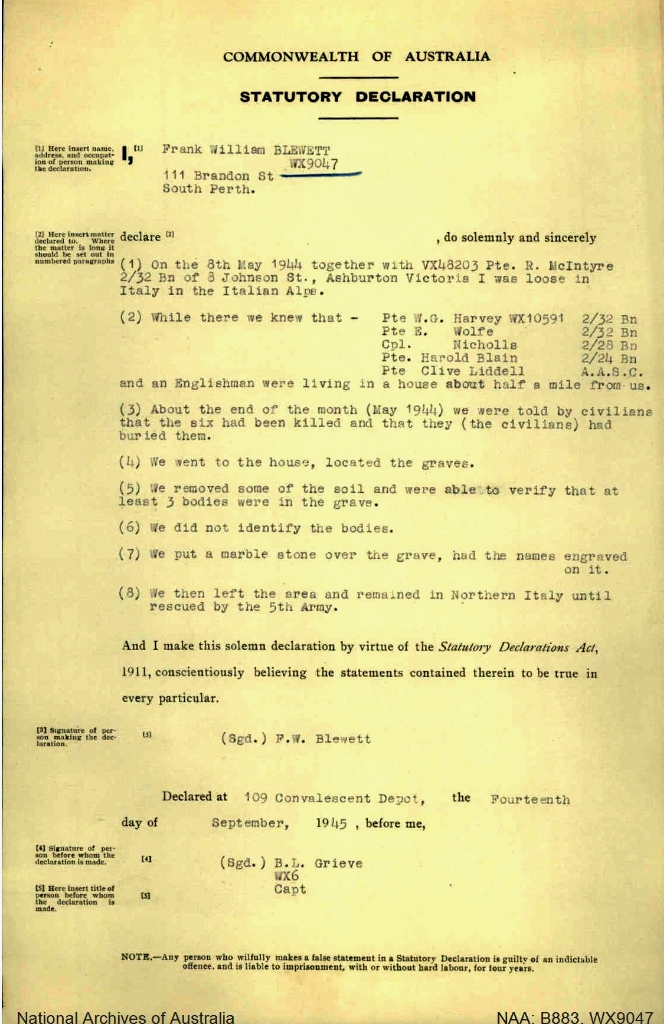

To read about the 1st Battle of El Alamein please go to following sites:
https://www.birtwistlewiki.com.au/wiki/2/32nd_Australian_Infantry_Battalion
https://www.awm.gov.au/articles/blog/1942-ruin-ridge
The following tells the story of an Australian POW who escaped camp who fought with partisans in Italy. https://www.coasit.com.au/images/ihs/journals/IHSJ_vol11_no1_2003.pdf
Below: Australian Morshead, Commander of 9th Division and New Zealand’s CO, believed to be Brigadier George Clifton, confer before battle. Clifton distinguished himself when as a prisoner he escaped.
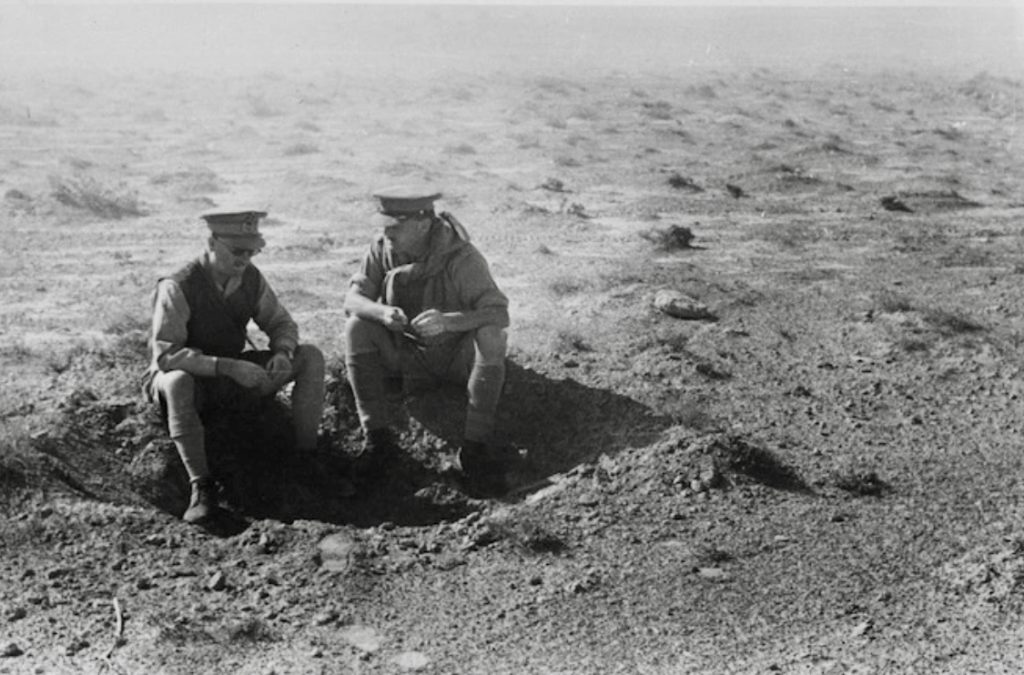

Lt General Morshead
CO 9th Division AIF
He later won fame as the Defender of Tobruk.
Below: German and Italians taken prisoner by Allies advancing to El Alamein.

Below: Field Marshall Erwin Rommel with military aides.

Below: Australian and New Zealand prisoners waiting to be shipped to Italy 1942. It appears the weather is very cold – or were the prisoners forbidden to take belongings and decided to wear all they owned?
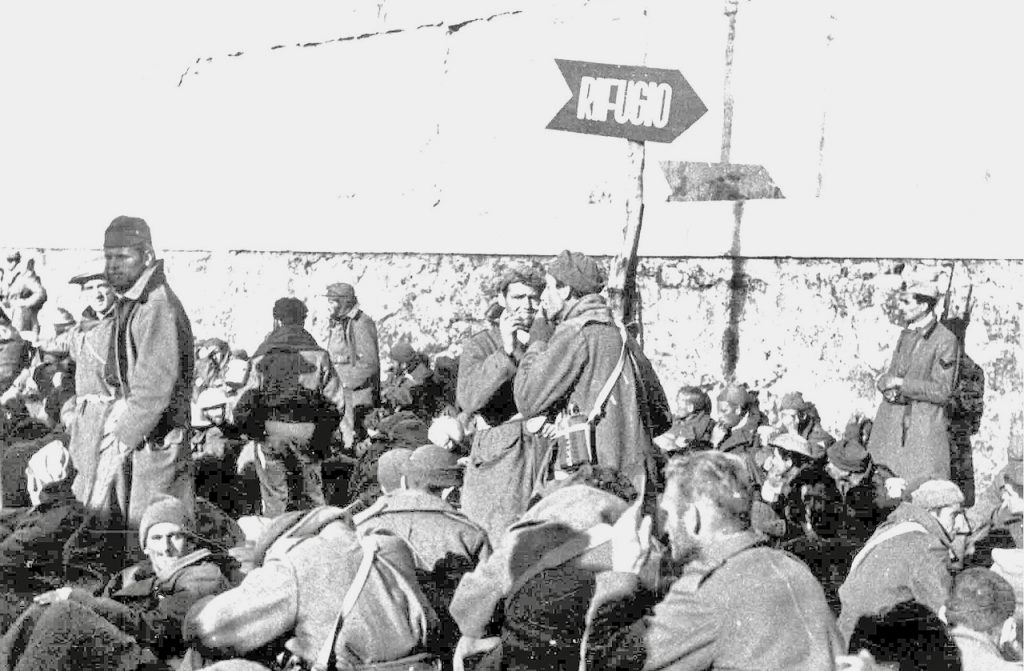
Below; L-R Churchill, Morshead & Britain’s General Claude Auchinleck Aug 42

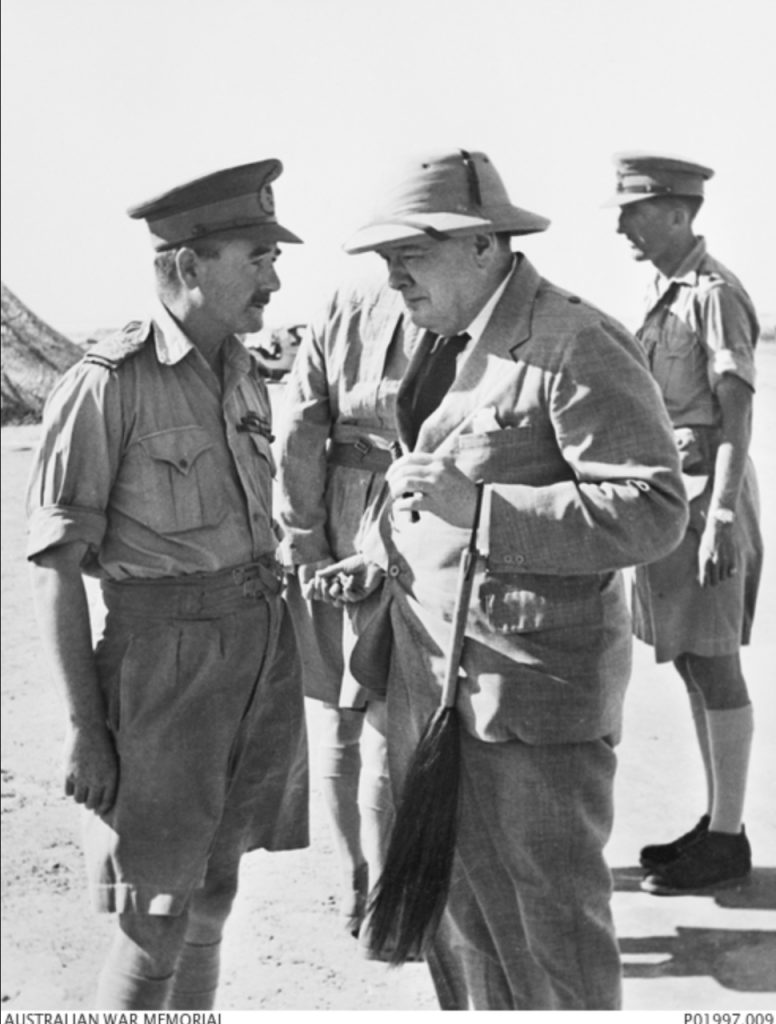
Above: Morshead and Churchill
Below: Morshead with MacArthur – taken later in war when 9th Division had left Middle East.

EL ALAMEIN WAR CEMETERY AND THE ALAMEIN MEMORIAL There are 7,367 burials in the cemetery, of which 821 are unidentified by name.

Below: From AWM.
El Alamein, Egypt. 11 November 1943. Repatriated AIF prisoners of war (POWs) from German arriving to pay their respects to fallen comrades of the 9th Division at the El Alamein cemetery.


I hadn’t planned to, but recently watched a story on SBS TV about 1st year High School Students (aged 12 and 13 years) in August 1945 from various schools in Hiroshima (the seventh largest Japanese city) and outlying areas were taken daily from their classrooms to help clear fire breaks in the city centre and assist city representatives and the army to pull down rows of wooden houses and remove the debri in anticipation of US bombing raids.
Nearly 7% of the city’s residential units had been torn down to make fire breaks.
Japanese military representatives had earlier met with schools to discuss the above project. The school boards were not happy with this request. Although not a direct order, it was made very clear this request could not be refused. For their adored demigod, Emperor Hirohito and Japan these young students had to volunteer their efforts towards the war.
There was a clear blue sky over Hiroshima on the morning of 6 August 1945 at 8.15 am ‘little Boy’ (equivalent of 15,000 tons TNT) was dropped on the city – it was an ideal target being flat and surrounded by hills. It is estimated there were about 27,000 students working on that morning.
The true number of dead will never be known. Initially the US estimated Hiroshima’s population was 255,000. 66,000-70,000 had died with 69,000 or more injured. These figures vary from sources – many of these would die within the next month or so from their serious burns and injuries received and from ongoing sickness for years/decades following.
Junko was home sick from school and was one of few survivors of her school class. Although not wounded, her siblings were and they made their way towards the river anxious to quench their thirst created by the excessive heat, fires and smoke. They joined hundreds and hundreds of burned Japanese of all ages making their way towards one of Hiroshim’a seven rivers seeking water, desperate to cool their red burning bodies and appease their thirst.
Another student survivor who had been working told how he woke to find his class-mates either dead or severely burned. Their clothes and hair burned from their bodies. Red-bodied students now hardly recognisable, were crying for their mothers and water. Those who could walk stumbled towards the river.
All of Hiroshima’s schools would have been lost in the horrific blast. Many families of students resided out of the immediate radius of the city such as Junko’s family. Distraught parents of students from these outer areas went into the flattened city centre in search of their children.
The numbers of Japanese victims Hiroshima and Nagasaki were only a small portion of WW2 deaths. How many lives were lost to Japanese brutality and invasion during the Pacific War between 1940-1945 and in China and Korea from 1937 to 1945.
Let us hope there will never be another world war.
https://www.sbs.com.au/hiroshima/





 .
. 





























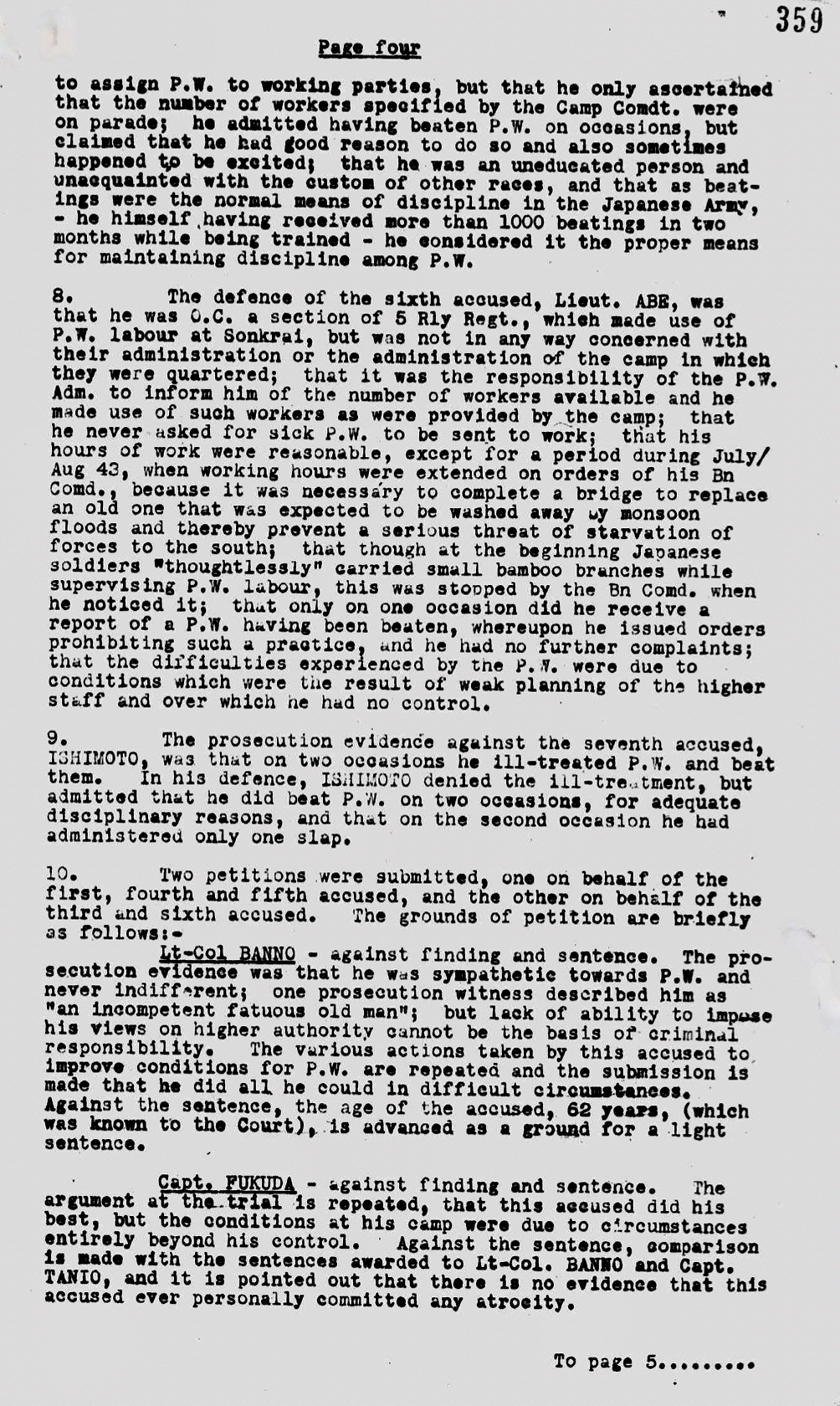

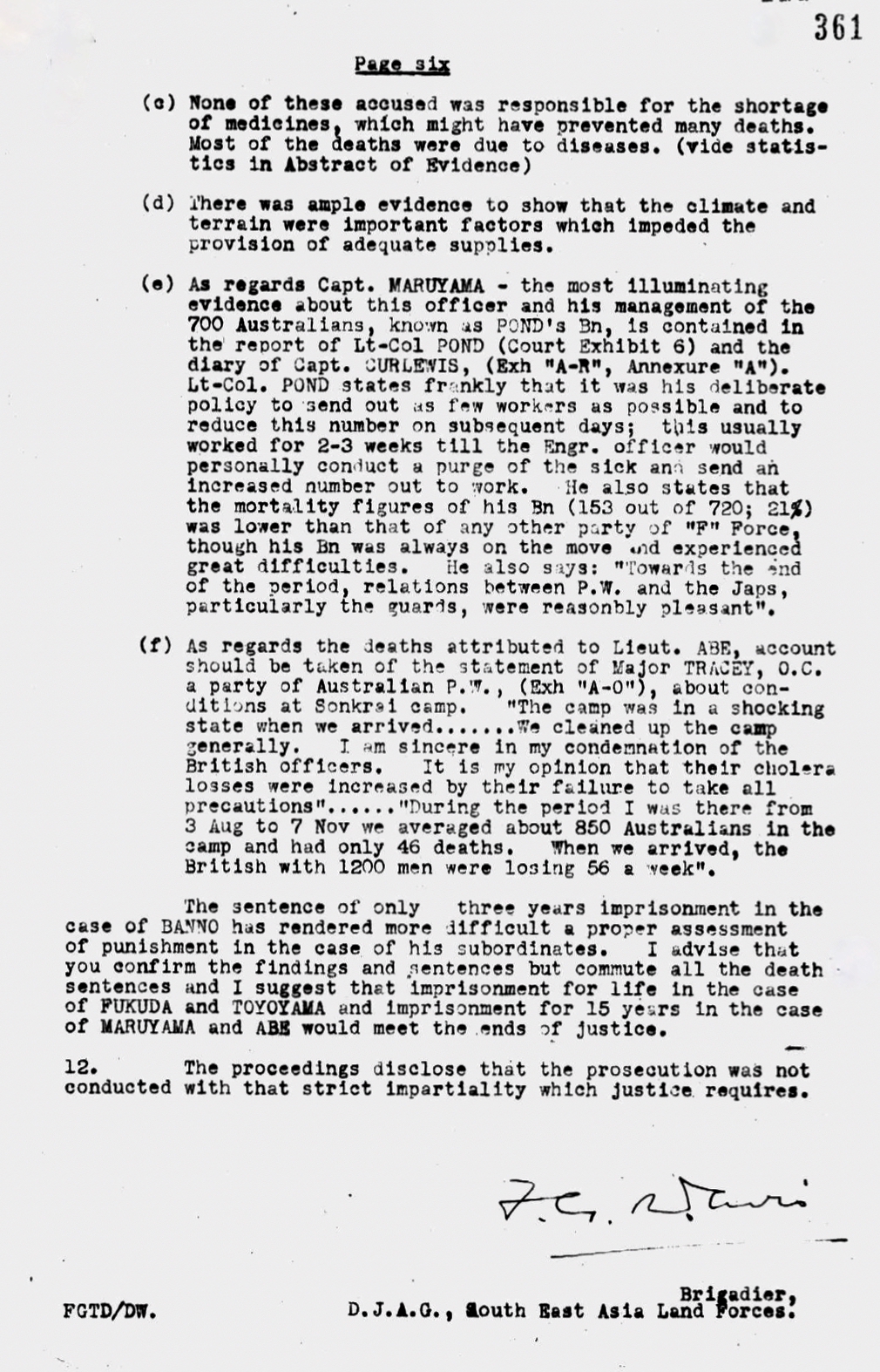







 Above: The main gate of Campo 57. About 1,200 Australians were held in this camp
Above: The main gate of Campo 57. About 1,200 Australians were held in this camp

















